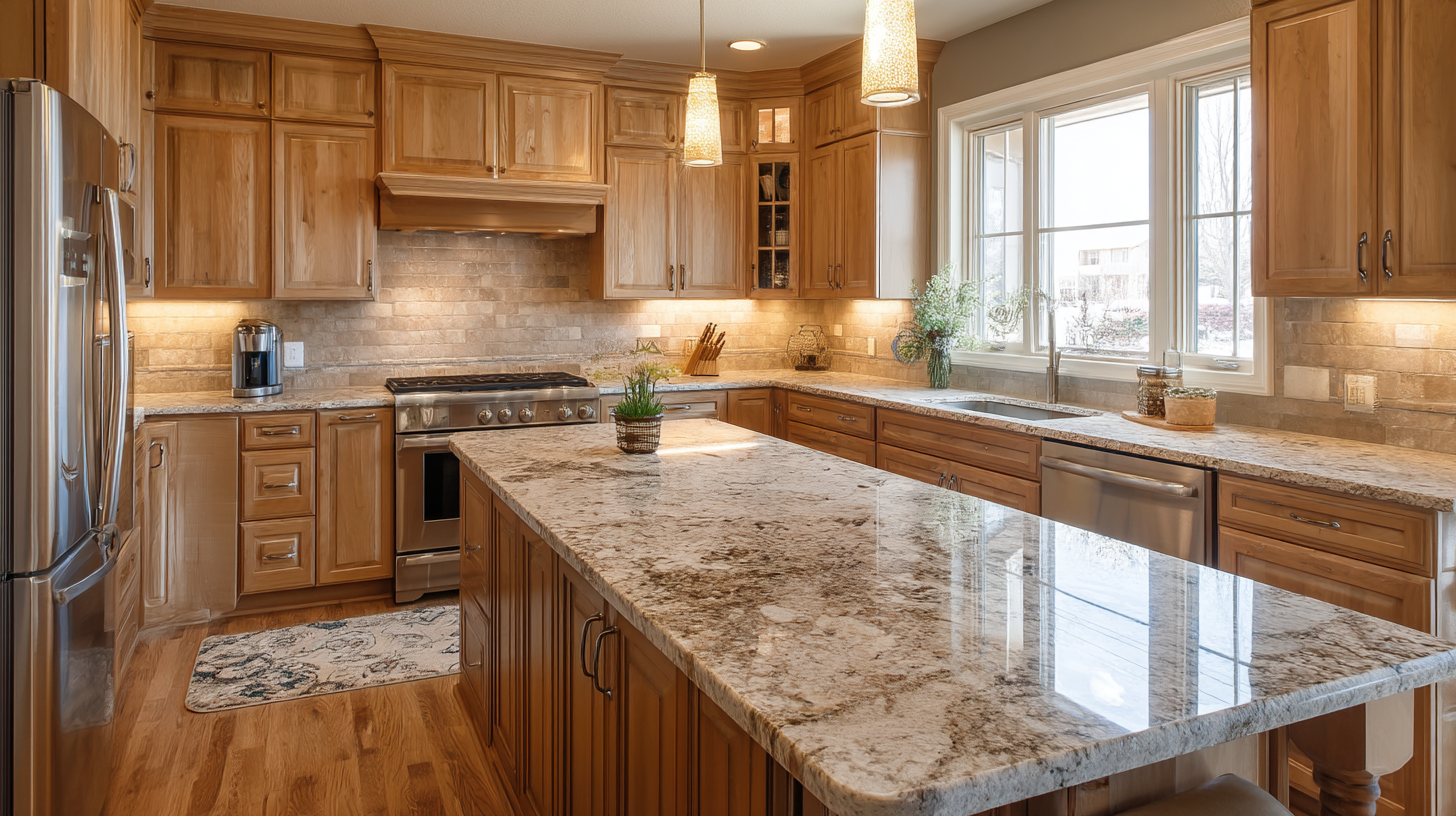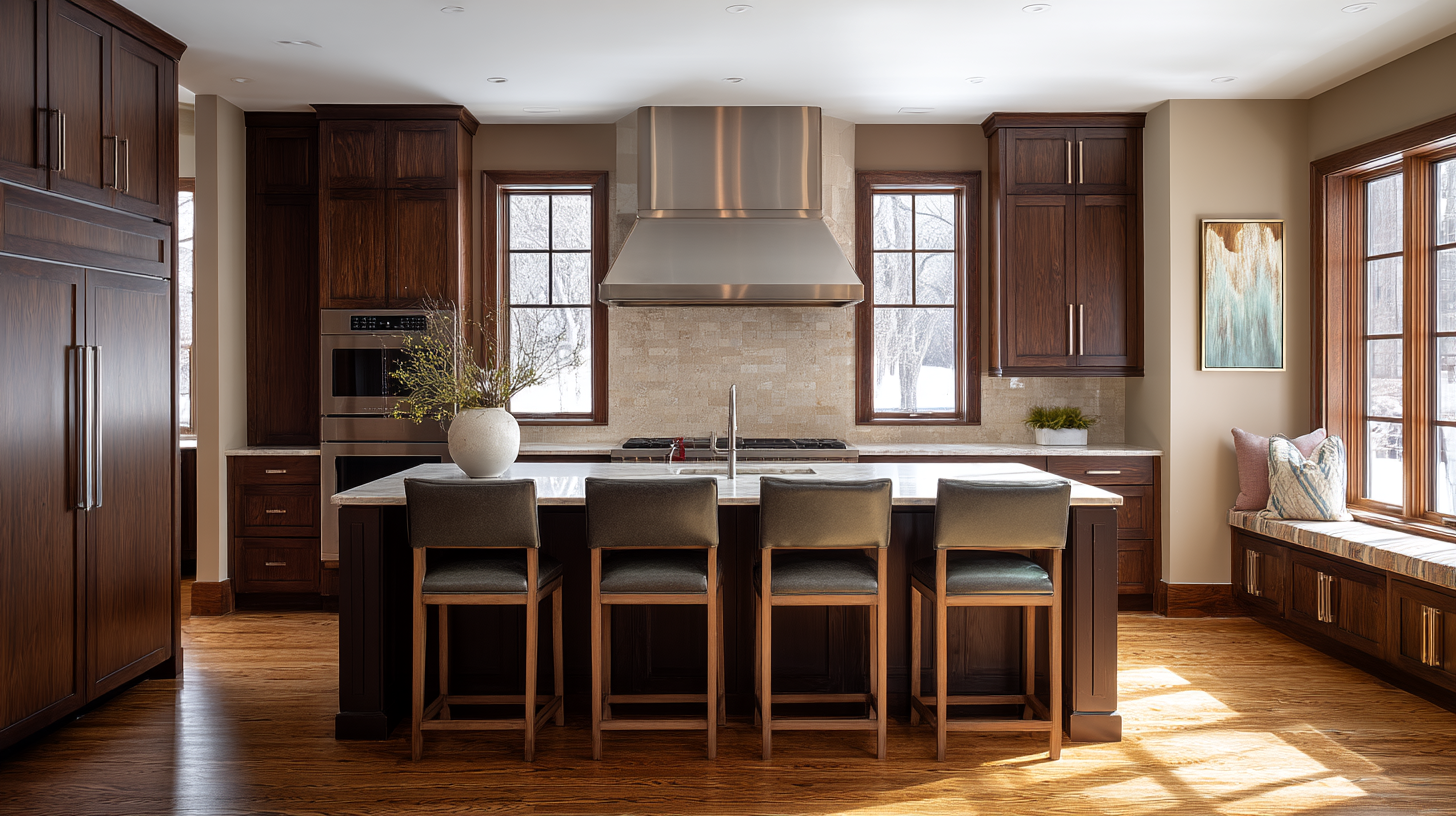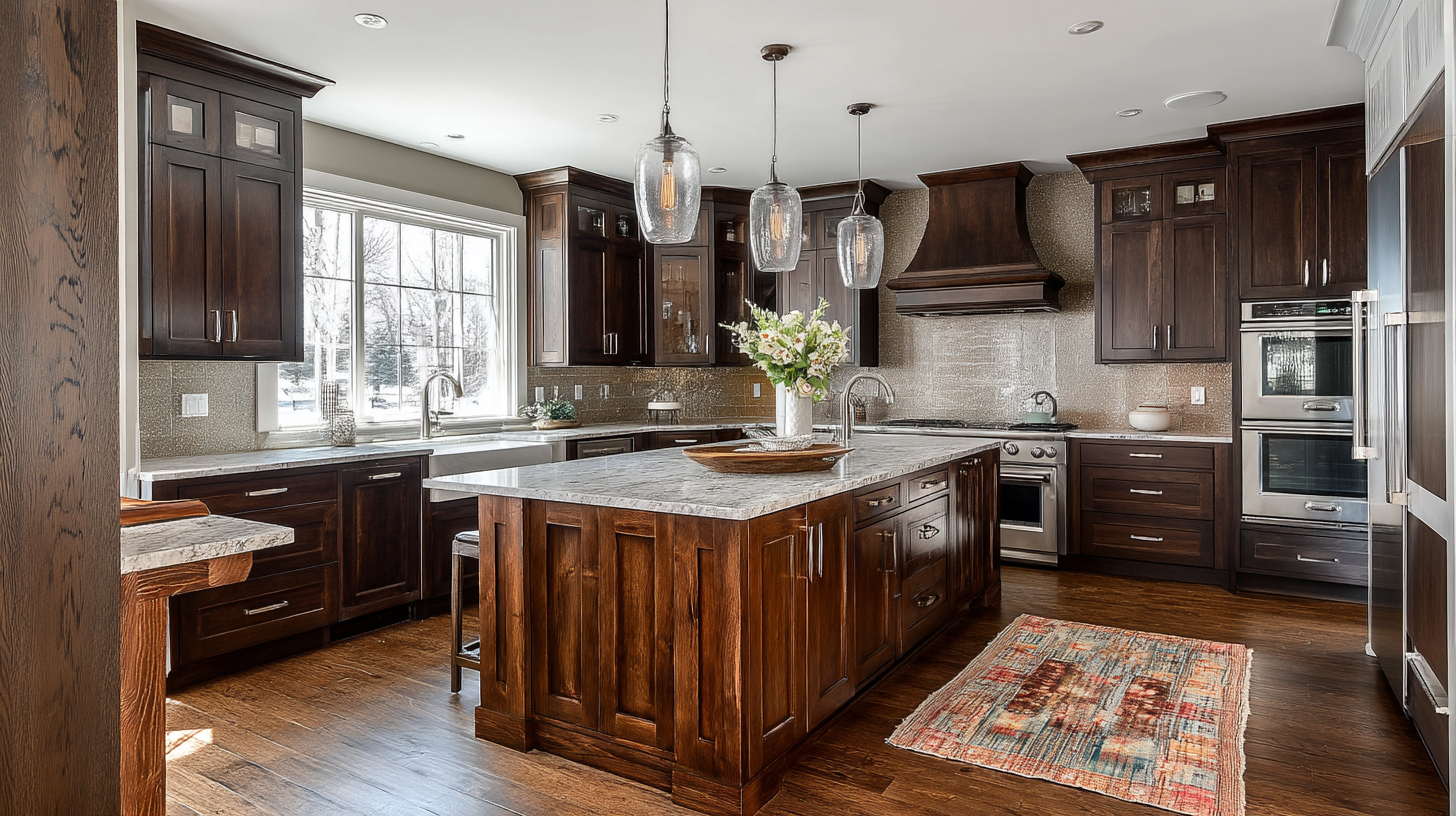 Kitchen cabinets speak volumes about the heart of your home, wooden kitchen cabinets especially, they bring warmth, character, and value. Learning how to clean wood kitchen cabinets is more than a chore, it is a way to protect that beauty, avoid costly repairs, preserve the wood finish, and enjoy cabinets clean for years to come. This guide shows you how to clean wood cabinet doors, addresses greasy wood cabinets, recommends natural wood cleaner options, explains a cleaning method with mild dish soap, how to use Murphy’s Oil Soap safely, and how to care for oak kitchen cabinets or stained wood without ruining the finish.
Kitchen cabinets speak volumes about the heart of your home, wooden kitchen cabinets especially, they bring warmth, character, and value. Learning how to clean wood kitchen cabinets is more than a chore, it is a way to protect that beauty, avoid costly repairs, preserve the wood finish, and enjoy cabinets clean for years to come. This guide shows you how to clean wood cabinet doors, addresses greasy wood cabinets, recommends natural wood cleaner options, explains a cleaning method with mild dish soap, how to use Murphy’s Oil Soap safely, and how to care for oak kitchen cabinets or stained wood without ruining the finish.
Why It Matters to Keep Cabinets Clean
Wood cabinets, whether stained, painted, oak kitchen cabinets or natural wood tones, are exposed every day to grease and grime from cooking, moisture from steam, splatters around the stove, sticky residue on cabinet doors, fingerprints, soap residue, dust, and dirt. If you let grime accumulate, the finish can become dull, even damaged, wood may warp, stain sets in, hardware pulls get sticky, drawer pulls lose their sheen, and cleaning becomes harder. To maintain value, appearance, function, and hygiene, you want a cleaning method that is gentle but effective, that protects the wood finish, that avoids strong cleaner or harsh chemicals that strip or dull surfaces, and that helps keep greasy kitchen cabinets from becoming permanently stained.
What You’ll Need Before You Start to Clean Wood Kitchen Cabinets
Here is a list of tools and supplies, many items you may already have:
- Soft cloths such as microfiber cloth, soft rag or towel
- Mild dish soap or gentle dishwashing liquid
- Warm water or hot water (as tolerated)
- Natural wood cleaner or a brand that is safe on wood such as Murphy’s Oil Soap
- Distilled white vinegar (for grease and grime spots)
- Spray bottle (for mixing vinegar solutions)
- Sponge or soft sponge, non‑abrasive
- Toothbrush or soft‑bristled brush for crevices in wood cabinet doors or doors with grooves
- Bucket(s) for mixing cleaner and rinse water
- Gloves to protect hands, especially if using any cleaner or vinegar
- Old towels to dry, absorb moisture
Safety and Preparation Tips
Before you begin, do a spot test on a less visible area of your wood surface to make sure your cleaner or method does not damage stain or finish. Use little water and see how finish responds. Move hardware pulls or drawer pulls carefully or remove them if you need to reach edges or corners. Work from top to bottom so drips do not end up on already cleaned lower cabinets. Wear gloves if you will be using cleaner, vinegar or if hands may be in hot water. Always wring out cloth or soft sponge well so it is damp cloth but not dripping. Too much water or letting water sit can damage wood. Wood finishes can be sensitive to moisture, heat, strong cleaner, or abrasive scrubbing.
Step‑by‑Step Cleaning Method for Wood Cabinets
These steps will help clean kitchen cabinets well without harm to wood, even for greasy wood cabinets or oak kitchen cabinets.
 Step 1 | Remove Dust and Surface Dirt
Step 1 | Remove Dust and Surface Dirt
Use a microfiber cloth or soft cloth to wipe off dust, dirt, cobwebs from wood cabinet doors, corners, top surfaces. Dust first helps avoid scratching finish when you later you wipe with liquid. Use dry microfiber cloth or rag for this. Don’t spray liquid yet. Dusting regularly helps protect finish and keeps surface ready for deeper cleaning.
Step 2 | Mix Your Cleaning Solution
In one bucket mix warm water with mild dish soap or dishwashing liquid. Use just enough soap so solution is sudsy but mild. If you have greasy cabinets, add a bit of distilled white vinegar or use natural wood cleaner such as Murphy’s Oil Soap in place of or in addition to mild soap. If you use vinegar make a mixture in a spray bottle (eg 50/50 vinegar and water) or a few drops of vinegar with water in a bucket. Always test mixture first. Have a second bucket or container of just hot water or warm water for rinsing cloths.
Step 3 | Clean Wood Cabinet Doors and Cabinet Faces
Dip your soft sponge or soft cloth into the soapy or wood‑cleaner solution, wring out excess so cloth is damp cloth not dripping. Gently rub the cabinet doors, frames, drawer pulls areas, around hinges, and edges. For oak kitchen cabinets, follow the grain of the wood. For wooden kitchen cabinets with grooves or raised panel doors, use a toothbrush or soft brush to gently clean the grooves. Use a little water, avoid soaking. After cleaning a section, rinse with clean warm water using another soft cloth or damp cloth, then wipe clean to remove soap residue. The rinse step is important so no soap residue remains which can dull finish or attract more dirt.
Step 4 | Tackle Grease and Greasy Wood Cabinets
Greasy kitchen cabinets usually affect areas near the stove, cabinet doors that are handled most often, around knobs and hardware, under range hood, behind pots, splatters immediately after cooking. For those areas, use the soapy solution or use a natural wood cleaner or Murphy’s Oil Soap mixed with water. If grease is stubborn, use vinegar mixture, or a paste made from baking soda and water, apply gently with soft sponge or toothbrush, let it sit a few minutes, then gently rub and rinse. Use a spray bottle with water and mild soap or vinegar for ease. Wipe clean, then dry. Grease and grime removed now will prevent buildup and preserve wood finish.
Step 5 | Clean Hardware Pulls, Knobs, Drawer Pulls
Hardware tends to get oily and dirty. Remove metal drawer pulls or knobs if possible, clean with mild soap and warm water, dry thoroughly, then reattach. If not removable, clean in place, being careful not to let water seep under hardware or behind. Use soft cloth, damp cloth to wipe around hardware, then dry with towel.
Step 6 | Drying the Cabinets Properly
Immediately after cleaning each section wipe with a dry towel or dry soft cloth to remove moisture. Wood should not sit wet. Dry cabinet doors, drawer fronts, frames, edges. Check joints or seams where moisture may hide. Wipe clean those areas multiple times if needed. Keep cabinets dry between cleanings as moisture causes damage.
Step 7 | Optional Conditioning or Polishing
If the wood finish has dulled, you may use products like Murphy’s Oil Soap wood cleaner or furniture polish made for wood. Use sparingly with clean soft cloth. For oak kitchen cabinets or stained wood, ensure polish is compatible with finish. Avoid waxy or silicone polishes that leave film. Wipe off any excess. A natural oil (like lemon oil or teak oil) can restore gloss for some finishes. Always spot test.
Frequency: How Often to Clean Wood Cabinets
 To keep cabinets clean without over‑treating wood:
To keep cabinets clean without over‑treating wood:
- Weekly wipe downs of handles, drawer pulls, splatters, frequently touched cabinet doors
- Monthly full surface wipe down using mild dish soap method
- Every 2‑3 months check for greasy buildup near stove or sink and clean those areas more thoroughly
- Deep clean including interior of cabinets, clean drawers, remove shelf liners, clean insides, hardware every 3‑6 months depending on use
What to Avoid to Protect Your Cabinets
These mistakes are common and harmful:
- Using strong cleaner or harsh chemicals not safe for wood or wood finish
- Scrubbing aggressively with abrasive pads, steel wool or rough scrubbers
- Using too much water or letting solution sit on cabinets, letting wood sit wet
- Skipping rinse or dry steps leading to soap residue, buildup or dull surface
- Using spray directly onto wood rather than onto cloth
- Using cleaner with strong acids or very high ph that break down finish
- Applying polish or oil without testing or overusing
Special Case: Oak Kitchen Cabinets
If you have oak kitchen cabinets, which tend to show grain and may stain easily, follow a gentler cleaning method. Use warm water with mild dish soap, avoid too much water, follow wood grain. For nonslip, shiny finish avoid soaked cloths. If finish is new, act carefully. Use natural wood cleaner or Murphy’s Oil Soap in correct proportions. Occasionally apply an oil safe for oak to restore sheen. Dry thoroughly. Spot test everything. Greasy wood cabinets of oak type benefit from vinegar solution diluted, or baking soda paste as needed, but never leave vinegar or strong cleaner to sit long or step away, or finish may dull.
Deep Cleaning Interiors and Drawer Spaces
Open all cabinet doors, remove items, clean inside surfaces, drawers, bottom of shelves, interior walls. Use the same gentle cleaning method: mild dish soap with warm water or wood cleaner, damp cloth or sponge, soft brush in corners. Rinse or wipe clean inside, dry completely before returning stuff. Drawer pulls or handles inside and drawer front also cleaned and dried. Clean interior prevents odor, mold, dirt or grime buildup.
Maintaining Clean Wood Cabinet Doors After Deep Cleaning
 After your deep clean and after you have wood cabinet doors clean on outside and inside, keep them that way:
After your deep clean and after you have wood cabinet doors clean on outside and inside, keep them that way:
- Wipe splatters immediately rather than letting them sit
- Every time you cook grease flies, wipe near stove area, around range hood or vent hood
- Keep hardware pulls clean to avoid transferring grease and grime onto wood doors
- Use microfiber cloth regularly for dusting
- Avoid hanging wet towels over cabinet doors as moisture drips can harm wood
When Cleaning is Not Enough
If your cabinets are damaged, finish is chipped or peeling, color uneven, wood warped, or odor or water damage present, then cleaning alone won’t restore. It may be time for cabinet refacing, refinishing, replacing door fronts, or consulting a professional. Sometimes a new finish is needed on wood cabinet doors or full new cabinets.
Frequently Asked How to Clean Wood Kitchen Cabinets Questions
Can I use distilled white vinegar to clean wood cabinets?
Yes, but only diluted (for example equal parts vinegar and water) and always test first. For lighter stains or greasy wood cabinets you can use spray bottle of vinegar mixture, lightly spray and wipe clean soon. Avoid letting vinegar sit too long as acid can affect wood finish.
Is Murphy’s Oil Soap safe for cleaning wooden kitchen cabinets?
Yes, Murphy’s Oil Soap is safe for many wood surfaces when properly diluted with warm or hot water, and when you follow label instructions. It works especially well for removing grime and dirt built up over time. It still needs rinsing and drying after using.
What’s the best natural wood cleaner?
Products like Murphy’s Oil Soap, mild dish soap, or vinegar mixed with water are among the best natural wood cleaners. Also cleaners free of harsh chemicals, strong acids, or abrasives. Always spot‑test, use soft cloth or microfiber cloth. Use little water. Use natural oil polish occasionally.
How do I clean greasy cabinet doors above the stove?
Start with removing dust, then apply the soapy mix or wood cleaner, or vinegar mixture with warm water using soft sponge or soft cloth. Gently rub, use a paste if needed for stubborn grease, rinse, wipe clean, dry. Avoid harsh scrubbing, avoid leaving moisture. Clean frequently to avoid heavy buildup.
Can I use soap residue or leave soap on cabinets?
No, you should always rinse and then wipe clean and dry surfaces after cleaning so no soap residue remains that could dull the finish or attract more dirt.
Final Tips
Use a spray bottle for vinegar or cleaner mixes for convenience, not to soak the surface. Always use soft cloth or microfiber cloth or soft rag. Wear gloves when using cleaners or vinegar. Use mild dish soap as your base cleaner, avoid strong cleaner. Follow the grain on oak kitchen cabinets. Dry everything with towel. Avoid things that dull wood finish. Keep up with cleaning weekly or monthly so wood maintains its beauty. A simple natural wood cleaner, hot water, mild dish soap, microfiber cloth and consistent care go a long way. Clean kitchen cabinets regularly, protect the wood finish, rid grease and grime, and enjoy beautiful wooden kitchen cabinets for many years.







